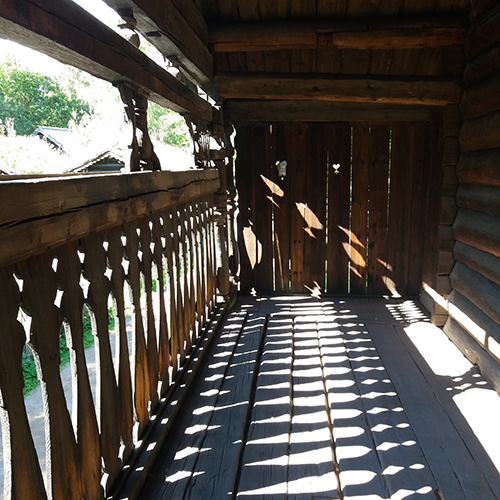Biodiversity and climate change adaptation through non-discrete architectural spaces and architectures
Systemic approach to traditions for sustainable futures
DOI:
https://doi.org/10.7577/formakademisk.2287Abstract
The research claims that traditions are not static. They develop and adapt based on the present situation. Due to the recent climate extremes coming to formally mild climate locations, their architectures can learn from traditional ones from more climate extreme locations. The present systemic design study on semi-interior, ‘non-discrete spaces’ (Hensel, 2013; Hensel & Turko, 2015), of Norwegian traditional architectures, so called ‘svalgangs’ and ‘skuts’ examine its reuse for today climate change adaptation and support of biodiversity that is currently decreasing. Our agricultural land become so toxic, that its species are recently moving and adapting for life in the cities. The discussed traditional spaces offer various boundary penetration of its surrounding environment while providing mediation of its biotic and abiotic agency. These do not cover only anthropocentric benefits for its users such as light and climate comfort but also offer opportunities of communication with other species or their sheltering.
This practitioners’ historical research survey motivated by design co-developes its own systemic process based methodology Systemic Approach to Architectural Performance that originates from ‘Systems Oriented Design’ (Sevaldson, 2013b) and ‘Time Based Design’ (Sevaldson, 2004). Where, this ‘non-anthropocentric architecture’ (Hensel, 2012) is in over-evolving co-design with ambient environment’s abiotic and biotic agents, including humans.

Downloads
Published
How to Cite
Issue
Section
License
Authors who publish with this journal agree to the following terms:
- Authors retain copyright and grant the journal right of first publication with the work simultaneously licensed under a Creative Commons Attribution 4.0 License that allows others to share the work with an acknowledgement of the work's authorship and initial publication in this journal.
- Authors are able to enter into separate, additional contractual arrangements for the non-exclusive distribution of the journal's published version of the work (e.g., post it to an institutional repository or publish it in a book), with an acknowledgement of its initial publication in this journal.
- Authors are permitted and encouraged to post their work online (e.g., in institutional repositories or on their website) prior to and during the submission process, as it can lead to productive exchanges, as well as earlier and greater citation of published work (See The Effect of Open Access).
- The author(s) must manage their economic reproduction rights to any third party.
- The journal makes no financial or other compensation for submissions, unless a separate agreement regarding this matter has been made with the author(s).
- The journal is obliged to archive the manuscript (including metadata) in its originally published digital form for at least a suitable amount of time in which the manuscript can be accessed via a long-term archive for digital material, such as in the Norwegian universities’ institutional archives within the framework of the NORA partnership.
The material will be published OpenAccess with a Creative Commons 4.0 License which allows anyone to read, share and adapt the content, even commercially under the licence terms:
This work needs to be appropriately attributed/credited, a link must be provided to the CC-BY 4.0 licence, and changes made need to be indicated in a reasonable manner, but not in any way that suggests that the licensor endorses you or your use.



